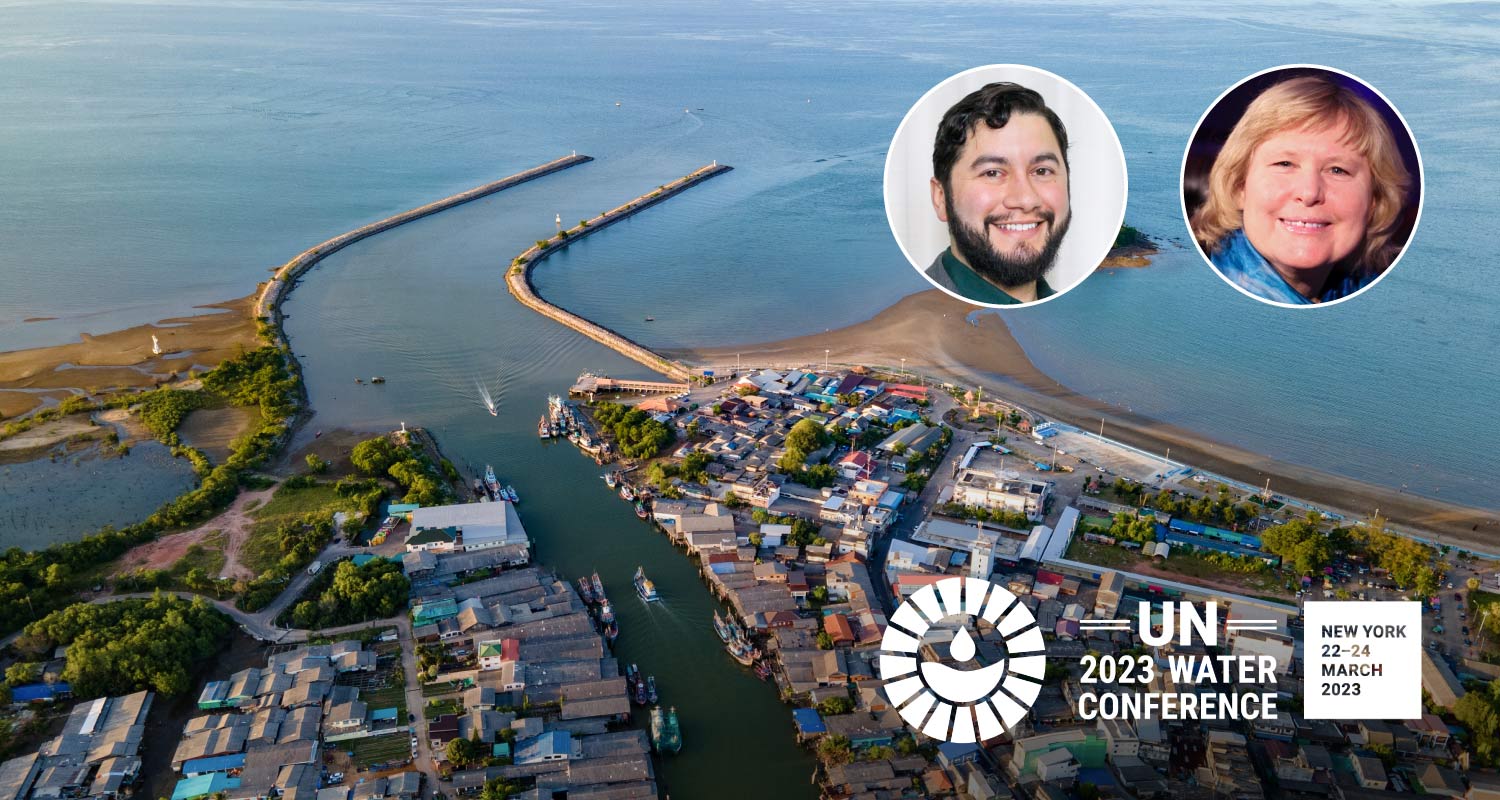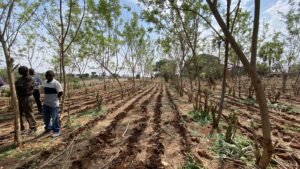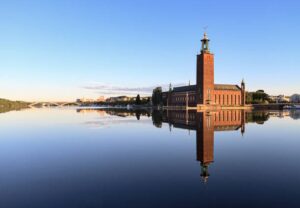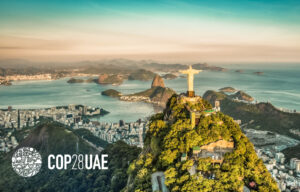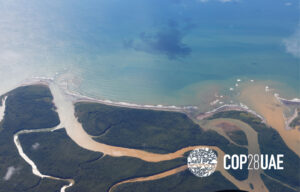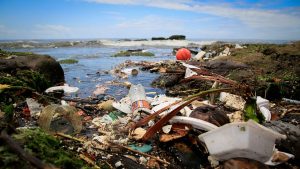Source-to-sea management high on the agenda at UN meeting
Source-to-sea management features prominently in the programme of the UN 2023 Water Conference. But how can communities and countries put it into practice? We spoke to SIWI’s two source-to-sea experts Ruth Mathews and José Murillo who are going to New York to offer advice.
Until recently, few people had heard of ‘source-to-sea’, but in the lead-up to the UN 2023 Water Conference, source-to-sea’s fundamental concept of cross-sectoral collaboration has become increasingly popular. The conference revolves around five themes explored in interactive dialogues. The third dialogue is entitled ‘Water for climate, resilience and environment – source to sea, biodiversity, climate, resilience and disaster risk reduction’.
How would you explain the source-to-sea approach to someone who has not heard of it?
José: The source-to-sea approach is not a new or exotic idea, but it offers an alternative to operational concepts that we have known for a long time and neglected to incorporate into management practices and governance frameworks. Many of us learned the concept of the water cycle when we were schoolchildren, and it is this same cycle that connects ecosystems and human activities from source to sea. Activities affecting the water cycle are likely to have unintended consequences in other parts, for example, building a barrier to interrupt the natural flow of a river will affect the ecosystems dependent on it as well as the ecosystem services it provides to communities. The source-to-sea approach highlights these potential, unintended impacts and can lead better informed policies, plans, and projects.
Ruth: Imagine that rain or snow falls on a forest, a farm, or your lawn, some of that water will soak into the ground or travel across it until it reaches a river. That water then flows downhill until ultimately it reaches the ocean. This means that the land, the rivers, the coast, and the ocean are all connected as one source-to-sea system. Now the interesting part of this is that the water in the ocean evaporates and then moves across land to become rainfall or snow again. So, we have this circular relationship of the water moving downstream in rivers but then moving back upstream in the atmosphere to become precipitation again.
Understanding these linkages between what we do on land, how we use water and what we put into it, how we change the coasts, and what water is carrying with it as it enters the ocean, is very important for the communities and businesses that depend on water and for nature. We cannot separate our actions in one part of the source-to-sea system from other parts of it, we need to keep in mind that it is all connected and treat it as one whole.
To do this we need to bring together those who do different kinds of activities, farmers, fishers, manufacturers, those who produce energy, people living in cities, or in rural areas, those who spend time in nature, and those who do not, to work together toward the future we want.
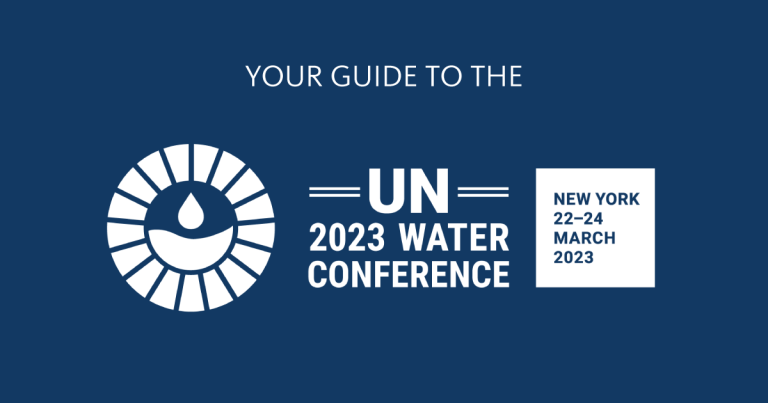
Your Guide to the UN 2023 Water Conference
Get a quick overview of what the UN 2023 Water Conference is and what to expect.
Download your guide“The source-to-sea approach is very important because it offers an alternative that promotes coordination and collaboration between sectors, across the source-to-sea continuum. If we continue to work in silos, ignoring the linkages upstream and downstream between ecosystems, we will create only partial, short-term solutions”
What does it mean that source-to-sea gets this much attention?
Ruth: There is increasing recognition that to achieve the Sustainable Development Goals we need holistic management that brings together sectors and upstream and downstream interests. Many of the problems we face now, such as the increase of floods and droughts, the diminishment of aquatic plants and animals, and staggering levels of pollution entering water are driven in part by our tendency to work in silos. Source-to-sea management presents a way forward that can help us bridge these silos and find holistic solutions. Seeing source to sea thinking rise on the global agenda is the first step towards the transformation in governance, decision-making, and finance that is needed to turn the tide on these planetary crises.
José: It is good news that source-to-sea continues to gain traction around the world because it means that decision makers are becoming more aware that the wellbeing and livelihoods of people everywhere are threatened or affected by the climate, pollution, and biodiversity crises that we have created. It is increasingly evident that these crises are interrelated and that to take decisive action it is necessary to coordinate and collaborate across sectors. Also, we cannot continue to ignore the biophysical reality that we live in continuums of ecosystems and landscapes from source to sea which means that actions in one part can have unintentional impacts on others.
“We will not be able to solve the triple planetary crises of climate change, biodiversity loss, and pollution without collective action from source to sea.”
Why is this so important?
José: The source-to-sea approach is very important because it offers an alternative that promotes coordination and collaboration between sectors, across the source-to-sea continuum. If we continue to work in silos, ignoring the linkages upstream and downstream between ecosystems, we will create only partial, short-term solutions and will not be able to take the decisive action needed against, for example, oceanic plastic pollution or to increase resilience to climate change.
Ruth: We will not be able to solve the triple planetary crises of climate change, biodiversity loss, and pollution without collective action from source to sea. The causes of these crises are complex, and lasting solutions will only come through partnerships that cross the traditional boundaries between land, freshwater, coasts, and the ocean and bring together upstream and downstream parties. The source-to-sea approach can guide us towards seeing the source-to-sea system as one interconnected whole and support us in finding holistic solutions that address the shared causes of climate change, biodiversity loss, and pollution. With the clock ticking towards catastrophic planetary changes, we need to act quickly in a coherent and comprehensive way. Source-to-sea management is a powerful tool for building the essential partnerships that are needed to accelerate action on SDG6 and turn the tide on these crises.
“My hope for the UN 2023 Conference is that participants leave the conference with the grit and determination to take decisive action toward achieving SDG6 and its related goals”
What do you hope will come out of the conference?
Ruth: My hope for the UN 2023 Conference is that participants leave the conference with the grit and determination to take decisive action toward achieving SDG6 and its related goals. To this end, we are sharing the experiences of SIWI, and the Action Platform for Source-to-Sea Management and its partners in working with regional, national, and sub-national governments on taking steps toward source-to-sea management. These experiences demonstrate that the holistic approach of source-to-sea management is not only beneficial in addressing challenges that cross the land-freshwater-coastal-marine continuum but also is possible. From hearing about how elements of source-to-sea management have been implemented in locations around the world, I hope that Conference participants return home ready to reach out to other sectors, to coordinate planning and decision making, to strengthen their understanding of the linkages between upstream and downstream interests and to forge a new path of collective action that will result in optimal benefits for the source-to-sea system as a whole. I also want the participants to know that SIWI stands ready to support them on this path. The Action Platform for Source-to-Sea Management is open to all organizations committed to holistic management of land, freshwater, coasts, and the ocean and provides an excellent opportunity for peer-to-peer learning, capacity development, and collaboration.
“Global events and processes such as the UN Water Conference are an excellent way to highlight important issues, share learnings, and exchange ideas but it is important that this translates into policies and actions at national and subnational levels so that the changes take place.”
José: I hope that the Conference increases the interest and uptake of source-to-sea management by decision makers and practitioners at national and subnational levels because this is where many of the actions needed have to happen if we are to confront the crises we face in a decisive way. Global events and processes such as the UN Water Conference are an excellent way to highlight important issues, share learnings, and exchange ideas but it is important that this translates into policies and actions at national and subnational levels so that the changes take place. However, I am aware this is easier said than done and its normal to wonder where to start with such a task. The good news is that through the Action Platform for Source-to-Sea Management and its partners are ready to provide support, and share the lessons learned of implementing source-to-sea management in different contexts and addressing different issues.
Source-to-sea sessions and events
See all the source-to-sea activities for the UN 2023 Water Conference and New York Water Week
See events
